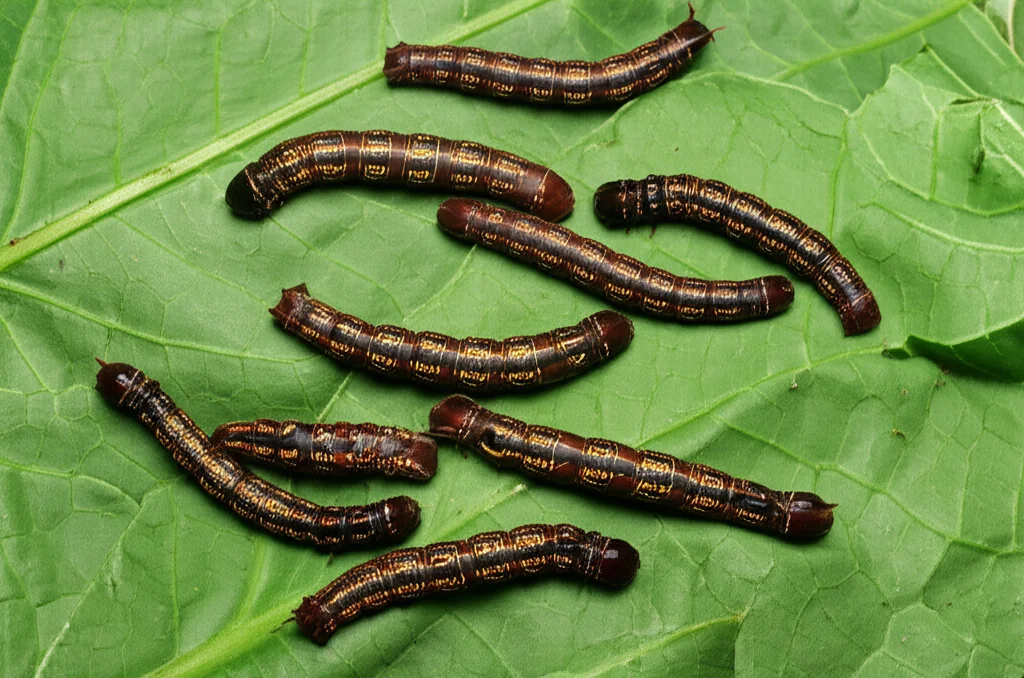Kwilu’s Edible Caterpillars: A Delicious Dilemma for Their Host Plants
Hey there! Let’s chat about something truly fascinating happening way over in the Democratic Republic of Congo, specifically in a place called Kwilu. Now, you might not think about bugs much, but for nearly everyone in Kwilu – like, 99% of folks! – certain caterpillars aren’t just bugs; they’re a super important source of protein. Think of them as little protein powerhouses crawling around, helping feed a population where food security can be a real challenge.
But here’s the rub, and it’s a big one: these caterpillars aren’t just floating around; they need specific plants to munch on. And guess what? The local population relies heavily on those *same* plants for all sorts of things – building houses, making charcoal for cooking, even for medicine. See the potential problem? If we use up the plants, the caterpillars lose their food, and the people lose a vital food source. It’s a classic ecological tightrope walk.
So, a bunch of smart folks decided to dive deep into this. They wanted to figure out exactly which caterpillars are the most popular, what plants they absolutely *have* to eat, and how the local people are using those plants. It’s all about understanding the connections before things disappear.
Getting Down to Business: The Study
To get the lowdown, researchers headed to two of the busiest spots in Kwilu: Masi-Manimba and Idiofa. They weren’t just guessing; they conducted surveys with 180 randomly chosen people, asking them about the caterpillars they eat the most, the plants those caterpillars live on, and how they use those plants themselves. They even collected samples of caterpillars and plant branches to make sure they knew exactly which species they were talking about.
They used some cool methods to figure out how “important” each caterpillar species, host plant, and plant use category was to the local community. It wasn’t just about counting; it was about cultural significance too.
Meet the Munchers and Their Green Menu
Okay, so out of all the caterpillars people eat in Kwilu, the study focused on seventeen species that were cited by over 75% of the people surveyed. That tells you these are the real stars of the show! Most of these popular caterpillars belong to the Saturniidae and Notodontidae families. If you’ve ever seen a big, chunky silkworm or emperor moth caterpillar, you’ve got the right idea – those are often Saturniidae.
These seventeen caterpillar celebrities aren’t picky eaters in the sense that they eat *anything*, but collectively, they rely on the leaves of a whopping fifty-one different plant species! That’s quite a menu. The plant family that came up most often was Fabaceae – you know, the bean or pea family. They make up almost half of the host plants identified. Other families like Apocynaceae, Phyllanthaceae, Rubiaceae, and Poaceae also play a role, but Fabaceae is definitely the VIP section of the caterpillar dining hall.

What’s really interesting is that nine of these plant species are like grand buffets, hosting more than two different species of these “most consumed” caterpillars at the same time. Some plants are particularly popular. *Petersianthus macrocarpus* (try saying that three times fast!) is a favorite, feeding five different top caterpillar species. *Millettia eetveldeana* and *Ricinodendron heudelotii* (another mouthful!) each host four species. These plants aren’t just caterpillar food; they’re culturally super important to the people too.
Where They Hang Out and What They Look Like
Where do these host plants grow? Well, mostly in the forest (about 74%). Some are found in the savanna, some in both, and a tiny percentage are even cultivated. As for what kind of plants they are, most are trees (66%), which makes sense given the forest habitat. You also find lianas, shrubs, grasses, and bushes on the menu.
Picky Eaters or Foodies? Feeding Modes
Now, how do these caterpillars approach their meals? It turns out about 58% are specialists, meaning they stick to plants from a single botanical family. Half of *those* are strict specialists, only eating *one* specific plant species. Talk about a limited diet! *Imbrasia ertli* and *Pseudantheraea discrepans* are examples of these super-picky eaters.
The other half of the specialists are oligophagous – they eat a few different species (2 to 6) but still within the same plant family. Then you have the generalists, making up about 41%, who are much more adventurous, feeding on plants from multiple families. Some Saturniidae species, like *Bunaea alcinoe* and *Gonimbrasia petiveri*, are the ultimate foodies, munching on plants from numerous families and orders!

More Than Just Food: Host Plant Uses
Here’s where the conflict really comes into play. These host plants aren’t just caterpillar cafeterias; they’re essential resources for the human population. The study identified seven main ways people use these plants:
- Medicinal purposes: Healing various ailments.
- Local building materials: Constructing homes and structures.
- Wood charcoal: A primary fuel source for cooking.
- Craft and technological applications: Making furniture, canoes, tools, etc.
- Food production: Some parts of the plants are eaten by humans.
- Timber: For small-scale logging.
- Cultural/ritual uses: Important in traditions and ceremonies.
- Other miscellaneous uses: Packaging, hygiene, fishing/hunting aids, bioindicators.
Most of these plants serve multiple functions, showing just how valuable they are to the community. The most common uses across the province are for medicine, building, and wood charcoal.
The Pressure Cooker: Threats from Human Use
The study points out that the biggest threats to these host plants come from the most intensive uses: wood charcoal production, building, and slash-and-burn agriculture. Think about it – making charcoal and building requires cutting down trees. Slash-and-burn agriculture clears land, often forests, to plant crops. These activities directly destroy the habitat and food source for the caterpillars.
Because Kwilu is relatively close to Kinshasa (the capital) and poverty rates are high, there’s a massive demand for charcoal. This puts immense pressure on forests in the surrounding areas, including those with caterpillar host plants. Similarly, most rural homes are built using local wood, adding to the demand.

Even craft, timber, and medicinal uses, while perhaps less widespread than charcoal or building, still contribute to the pressure, especially on certain valuable species. For instance, *Ricinodendron heudelotii* is incredibly versatile, used for everything from canoes and drums to medicine. This high demand across multiple categories makes it particularly vulnerable.
The Cultural Connection
The cultural importance of these plants can’t be overlooked. Some species are deeply embedded in local traditions, used for rituals or marking seasons. Interestingly, some plants that are culturally important are also the ones most heavily used for practical purposes like charcoal and building. This creates a complex situation where conservation efforts need to consider both ecological necessity and cultural value.
The study used a fancy statistical method called Principal Component Analysis (PCA) to show how the different uses of plants relate to their cultural importance. It basically confirmed that the plants most used for charcoal, building, timber, and craft are also the most culturally important and, therefore, the most threatened by overexploitation. Species like *Ricinodendron heudelotii*, *Petersianthus macrocarpus*, and *Erythrophleum africanum* popped up as being highly important both culturally and as caterpillar hosts, while also being heavily used by people.
The Dilemma and What Can Be Done
So, we have this situation: caterpillars are a vital food source, they depend on specific plants, and people also depend heavily on those *same* plants for their livelihoods and needs. The current level of plant use, especially for charcoal and building, is unsustainable and directly threatens the caterpillars by destroying their habitat. This is particularly risky for the picky eater caterpillars who only rely on one or a few plant species. But even the generalists and the popular Saturniidae are at risk because their favorite, most important host plants (*P. macrocarpus* and *R. heudelotii*) are under immense pressure.
The local community has a lot of knowledge about these caterpillars and plants, and they know there’s a problem. But knowing isn’t enough; action is needed. The researchers suggest that promoting sustainable caterpillar farming (semi-rearing) could be a key part of the solution. If people can raise caterpillars, it might reduce the pressure on wild populations and, crucially, on their host plants.
But for semi-rearing to work, you need a reliable supply of host plants. This means reforestation efforts are critical – planting back the trees that the caterpillars need, especially the ones that host multiple species or are essential for the picky eaters. Creating new areas with these host plants could help conserve biodiversity *and* provide a sustainable food source for the future.
It’s a complex puzzle involving ecology, culture, and economics. Understanding which plants are most critical and most threatened, as this study did, is the first step. The next is finding ways for humans and caterpillars to coexist sustainably, ensuring both can thrive in Kwilu.
Source: Springer







